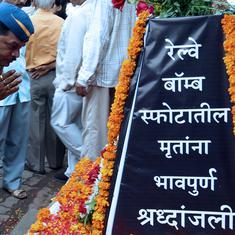In an industry where only 7% of women reach the C-suite, and 45% move out of core engineering roles within the first eight years of their careers, S Saichitra is an anomaly.
The 40-year-old has spent nearly two decades building the technology that powers Matrimony.com, India’s largest matchmaking website by number of visitors. In 2000, she began as a coder with the five-member group that started the website, and now she leads a 200-member team as the chief portal and mobile officer overseeing website and app development of all of Matrimony.com’s verticals. These include BharatMatrimony.com, CommunityMatrimony.com, and EliteMatrimony.com, as well as new ventures like wedding photography and venue booking.
Matrimony.com, which went public in September this year to raise Rs 500 crore (around $77 million), operates over 300 different websites with over 3 million active registered users. And it claims to have helped over 3 million people find their spouses.
A lonely place
Eighteen years ago, Saichitra had just graduated with a masters degree in computer applications from Tamil Nadu’s SASTRA University when she first heard about the yet-to-be-launched Matrimony.com. At the time, matchmaking was mostly done through word-of-mouth referrals, classified ads in newspapers and magazines, or through community marriage bureaus.
But working out of a make-shift office in a basement in Chennai, Matrimony.com’s founder and CEO Murugavel Janakiraman was attempting to transform the industry and bring it on to the internet. It was the opportunity to use her tech chops to build a company in a new industry that excited Saichitra. “I was a kid that time… I always thought I would have to be in a role where I can contribute something big and grow along with the organisation,” she told Quartz.
In addition to bringing her tech expertise, as the only coder on the team, Saichitra was also the only woman there and brought a much-needed female perspective to the product. “Being a woman, you understand the emotional part of it better...and this product is completely emotional, it’s not a very transactional product. And it helps me visualise what a customer would feel and what can be done to make their life better,” she explained.
For companies, particularly consumer-facing firms that require empathetic thinking, the gender balance in a team is critical, said Sairee Chahal, founder of women-only job portal Sheroes. “Being able to make space for diversity is really important for a company,” she told Quartz.
But it’s also Saichitra’s resilience that stands out. “There are barely any women in the tech world at (the) C-levels (highest-level), especially in an entrepreneurial company. It’s a lonely place, being where she is,” Chahal added. “You do need exceptional determination.”
Catalysing a transformation
Initially, Matrimony.com was a vanilla online classified site, where people could create basic profiles with some details about them. The portal looked like an online version of a newspaper’s matrimonial column. And features like photographs and phone numbers were accessible only to paid members, many of whom were apprehensive of disclosing their identities on the internet.
“People weren’t used to seeing matrimonial ads online...some of them were curious, some of them were hesitant. There was an initial apprehension about ‘can I put my details online’,” Saichitra said. So, besides writing lines and lines of codes (those were the days without reference services like Stackoverflow), Saichitra also worked on brand building and awareness exercises to convince prospective clients that marriages could happen through the internet.
Over the next few years, social media picked up in India and users became more open to sharing personal information on the internet. By then, Matrimony.com also had several competitors, including Shaadi.com and Jeevansathi.com. Feeling the heat, the company decided to take its offerings a notch higher by adding new features, such as a chat messenger, and launching a mobile app. The company also took a call to transform from being a mere classifieds site to a data-driven matchmaking platform.
So, Saichitra and a data sciences team of around 12 people started accumulating data about customer behaviour on their website. Soon enough, the company realised that it was hard to spot trends because every user had unique preferences. Moreover, accounts were being accessed not just by the prospective bride and groom, but also by their parents and siblings, which meant that user behaviour varied almost on a daily basis.
“Machine learning is really the key, especially for us, because one key question we keep asking is, when a person registers, and when he finally finds a match, how his preferences vary or how they get shaped. Somebody might have too narrow a preference or too broad a preference and over a period of time, they might keep changing it,” Saichitra said. “[We] needed a self-learning algorithm which takes into consideration the user behaviour.”
The company embraced artificial intelligence and machine learning in around 2015, much before these became the buzzwords in the tech industry, and developed its recommendation engine, Matrimony’s Intelligent Matchmaking Algorithm, that sifts through millions of user profiles and sends users recommendations based on their activity on the website. In 2015, Matrimony’s Intelligent Matchmaking won the Excellence in Analytics award from IT industry body Nasscom.
Today, AI is at the core of Matrimony.com’s technology.
A techie for life
Until around 2010, Matrimony.com outsourced most of its coding, but now, it’s all done in-house under Saichitra’s leadership. The technology team of the company operates almost like an independent company – be it adopting agile software methodologies or conducting hackathons periodically. Saichitra also ensures that her team constantly improves the tech backbone and incorporates user feedback. For instance, Matrimony’s Intelligent Matchmaking Algorithm, which was initially based on only user behaviour on the desktop website, is now including data from the mobile app, analysing location-specific data, etc.
Matrimony.com also constantly keeps an eye on newer technologies in more advanced markets. The progressive web app which the company introduced in October this year is an example. Progressive web apps offer smartphone users an app-like experience through a website, without consuming as much battery, internet bandwidth, or memory space as an app does.
And as Matrimony.com gradually moves beyond matchmaking into related services such as wedding photography and shopping, Saichitra is constantly preparing for new challenges. “We’re seeing every alternate day something new is coming – free data, new handsets – so it’s going to be more exciting,” she said.
This article first appeared on Quartz.










